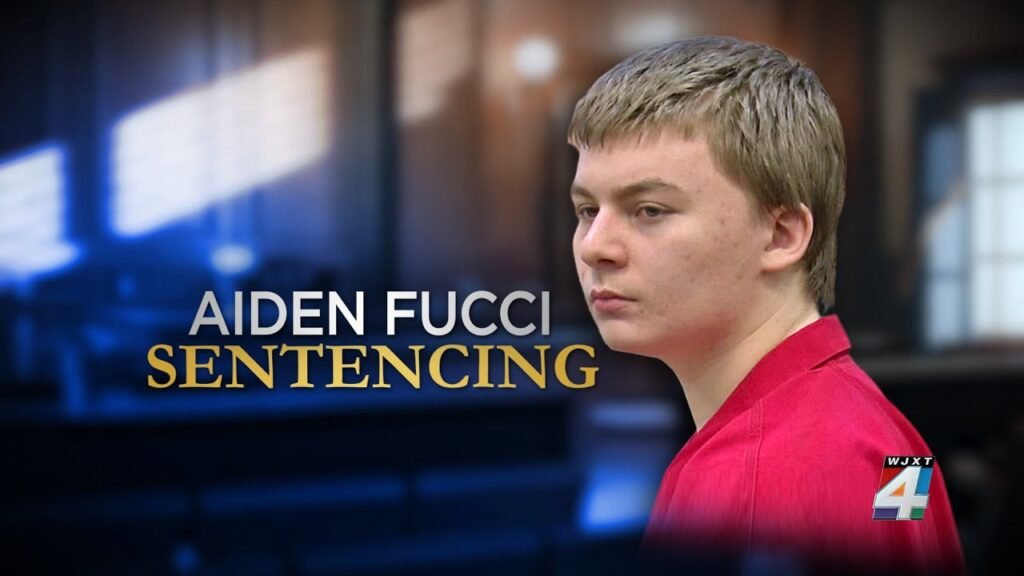Introduction to Aiden Fucci’s Case
Aiden Fucci, a name that has resonated throughout the media in recent years, is central to a case that has sparked intense public interest and debate. At the heart of this tragic event lies the unfortunate demise of 13-year-old Tristyn Bailey in May 2021, whose death has drawn considerable attention due to the age of both the victim and the accused. Aiden Fucci, also just a teenager at the time, was arrested and charged with first-degree murder, a move that sent shockwaves through the local community and beyond.
The circumstances surrounding the incident are both alarming and complex. Fucci and Bailey were seen together on the night of her death, which raises questions about their relationship and the events leading up to the tragic incident. Aiden Fucci’s actions blurred the lines between youthful behavior and the gravitas of criminal responsibility, making the case particularly compelling for legal analysts and psychological experts alike. This incident unmasked a darker undercurrent in youth culture, leading to broader discussions around mental health, peer pressure, and the influences of social media on young individuals.
The initial public response to the case was one of shock and sadness, as many grappled with the loss of a young life and the implications of a juvenile involved in such acts of violence. Local residents united in grief, with memorials held in honor of Tristyn Bailey. Media coverage amplified the dialogue surrounding the case, framing Aiden Fucci as a representation of a troubling trend among youth, further igniting discussions on societal roles in mitigating such violence. As this case continues to evolve, the implications it carries for both law and society are profound, setting the stage for deeper investigations into the motivations behind such actions.
The Incident: What Happened?
The case of Aiden Fucci began on May 9, 2021, when a tragic incident unfolded in St. Johns County, Florida. The confusion, chaos, and sorrow that enveloped the events surrounding this case have left the community and beyond grappling with the aftermath. Aiden Fucci, a 14-year-old boy at the time, was accused of the murder of 13-year-old Tristyn Bailey, who had been reported missing earlier that day.
On the morning of her disappearance, Tristyn was last seen at a local community park with Aiden. Eyewitness accounts suggest that they were together before she was reported missing. As hours turned into days without sign of Tristyn, a massive search effort was mobilized, involving law enforcement, community members, and volunteers. The tension in the air heightened as the search expanded beyond typical bounds, searching wooded areas and surrounding neighborhoods.
On May 10, just a day after her disappearance, Tristyn’s body was discovered in a wooded area near the vicinity where she had last been seen. The authorities quickly became focused on Aiden Fucci due to inconsistencies in his statements and his relationship with the victim. As the investigation progressed, details emerged indicating that Aiden had allegedly taken actions that led to Tristyn’s tragic death. Investigators uncovered evidence that suggested foul play, including the discovery of a weapon believed to be involved in the crime.
The community was left in shock with the revelations that followed. Not only did the case bring forth a deep sense of loss for Tristyn’s family and friends, but it also raised complex questions about youth violence and societal influences. Aiden Fucci’s case became a focal point for discussions about mental health, accountability, and the factors contributing to such a heartbreaking tragedy.

Legal Proceedings: The Court Case and Its Ramifications
The legal proceedings surrounding the case of Aiden Fucci represent a significant chapter in the discourse surrounding juvenile justice and accountability. Following the tragic incident that claimed the life of a 13-year-old girl, Aiden Fucci was charged with first-degree murder, an assertion that underscored the severity of the crime and the weight of the associated legal consequences. Initially, the case garnered immense media coverage, reflecting a public appetite for understanding the motivations and circumstances that led to such a devastating act.
The court hearings unfolded methodically, with various phases including arraignments, pre-trial motions, and evidentiary hearings. Aiden’s defense presented arguments centered around elements of mental health, suggesting a complex interplay that influences juvenile behavior. However, the prosecution was resolute in presenting a narrative of culpability, emphasizing the importance of accountability even in cases involving minors. The contrasting perspectives exhibited throughout the hearings sparked widespread public debate regarding the appropriateness of the charges and potential sentencing guidelines.
As the case progressed, the media’s coverage intensified, bringing crucial discussions to the forefront regarding the intersection of juvenile crime and societal responsibility. Public reactions varied substantially, oscillating between sympathy for the accused due to his age and outrage over the heinous nature of the crime. This environment fostered conversations about mental health resources for adolescents, the effectiveness of the juvenile justice system, and the implications of treating young offenders in adult court.
Ultimately, the outcome of Aiden Fucci’s trial not only resonated with the families affected by the tragedy but also set a precedent for future cases involving juvenile offenders. The implications extend beyond the courtroom, stimulating ongoing dialogue about the need for reform in how the justice system addresses both mental health and accountability within the youth demographic. These discussions will likely continue as communities seek to understand and prevent such occurrences in the future.
Broader Impacts: A Reflection on Society and Youth Crime
The tragic case of Aiden Fucci serves as a poignant reminder of the increasing prevalence of youth crime in today’s society. Fucci, a teenager at the center of a highly publicized incident, highlights not only individual actions but also the broader societal factors that contribute to such events. Understanding the implications of this case is essential for developing effective strategies to address youth crime and mental health issues.
One significant aspect to consider is the mental health of young individuals. The pressures faced by today’s youth are unprecedented, with social media, academic expectations, and familial issues creating an overwhelming environment. Unfortunately, mental health issues are often stigmatized, preventing at-risk youth from seeking the help they desperately need. Aiden Fucci’s actions call into question how society approaches mental health awareness for adolescents and underscores the urgent need for accessible support systems that cater specifically to young people’s needs.
Additionally, societal values play a critical role in shaping the behavior of young individuals. As societal norms evolve, the lines between acceptable behavior and criminal activity can blur, raising crucial questions about accountability and culpability. The case also reflects how peer influence and the desire for acceptance can lead youth down dangerous paths. It urges us to examine how we can cultivate healthier environments for adolescents where they can thrive without succumbing to negative influences.
Lastly, addressing the root causes of such tragedies necessitates comprehensive reforms in the support systems available to at-risk youth. This includes not only enhanced mental health programs but also greater parental involvement and community engagement to foster resilience. The implications of Aiden Fucci’s case compel us to reflect on our collective responsibility to prevent further incidents and to create a society that prioritizes the well-being of its youngest members.
